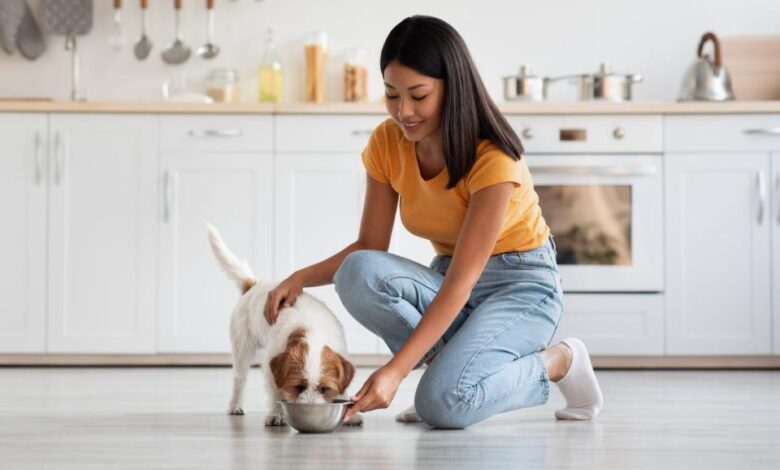How Often Should I Feed My Dog? Here’s a Vet’s Advice

Prostock-Studio / Getty Imags
As a loving pet parent, you know that your pup relies on you for essential care, like daily meals. It’s a big responsibility—divvying out the right portion sizes and nutritional values for your pup’s lifestyle and life stage. And if you find yourself wondering, “How often should I feed my dog?” you’re not alone.
Adult dogs should eat two or three times per day, says Kelly Fishman, DVM, founder of Strut Animal Mobility Specialists and veterinary consultant for MYOS Pet. However, the best feeding schedule for your dog also depends on their lifestyle, age, and overall health. Your veterinarian is the best source of information when creating a tailored feeding schedule for your pup. With that in mind, here are some general guidelines for how often to feed your dog.
How Many Times a Day Should You Feed Your Dog?
Fishman says small meals throughout the day—two or three—keep your pup’s metabolism in good working order. Meals spaced more than 12 hours apart slow the metabolism and can make pups nauseous.
“Some dogs that are fed once per day will occasionally vomit, as their empty stomach fills with stomach acid causing acid reflex,” she says.
Regardless of the feeding schedule you choose, Fishman says to consider your dog’s specific mealtime needs. For example, senior dogs who have achy joints might find bending down to eat more challenging than it used to be; they might prefer elevated food bowls and non-slip mats.
RELATED: What to Feed a Dog With an Upset Stomach
How To Establish a Feeding Schedule For Your Dog
Establishing a feeding schedule is important. “Dogs like routine, which means they feel secure when fed on a regular schedule,” Fishman says. Ideally, pups are fed breakfast, dinner, and perhaps lunch at the same time each day. That said, what works best for you and your pup might look a little different than other furry families.
However, Fishman doesn’t recommend free-feeding adult dogs (leaving a bowl of food to graze on throughout the day) unless your vet says otherwise due to a medical condition.
Finally, a feeding schedule should take into account your dog’s training and exercise regimen. Since pups are more food motivated before mealtime, this is a good time to practice the trick your pup has been working on. And after mealtime, provide ample time to digest before vigorous exercise. This may reduce the risk of bloat and other serious digestive issues.
What To Do If Your Dog Prefers to Graze
Does your dog have a habit of snacking throughout the day? As do I, puppers. Nonetheless, Fishman says it’s still important to create scheduled mealtimes using a bowl of food accurately measured for the day.
“Put down the food and allow your dog to eat as much as they want,” she says. “Once they walk away, start a timer for 30 minutes and pick up the food when the timer goes off.” Repeat at every scheduled mealtime, adding any leftovers from one meal onto the next meal. Your dog will eventually get used to eating their entire meal in one sitting.
RELATED: The 15 Best Dog Puzzle Toys to Beat Boredom
Should Puppies Eat More Often Than Adult Dogs?
How often (and how much) you should feed a puppy depends on a few factors, like their breed and age. For example, small breed puppies are at especially high risk of hypoglycemia, a dangerous drop in blood glucose. Until they reach about 3 months of age, your veterinarian may recommend feeding them four meals or more a day. Puppies also need to eat food with a different nutrition profile than adult dog food, which is why they need breed-appropriate food formulated especially for growing puppies.
During mealtime or as snacks, Fishman says to try hand-feeding your pup. It teaches them to politely accept food with a gentle mouth and strengthens the bond between you and your new puppy, she says. You can also use their daily food allotment for rewards while training, so you can avoid accidentally feeding too many treats.
